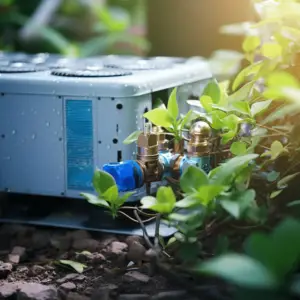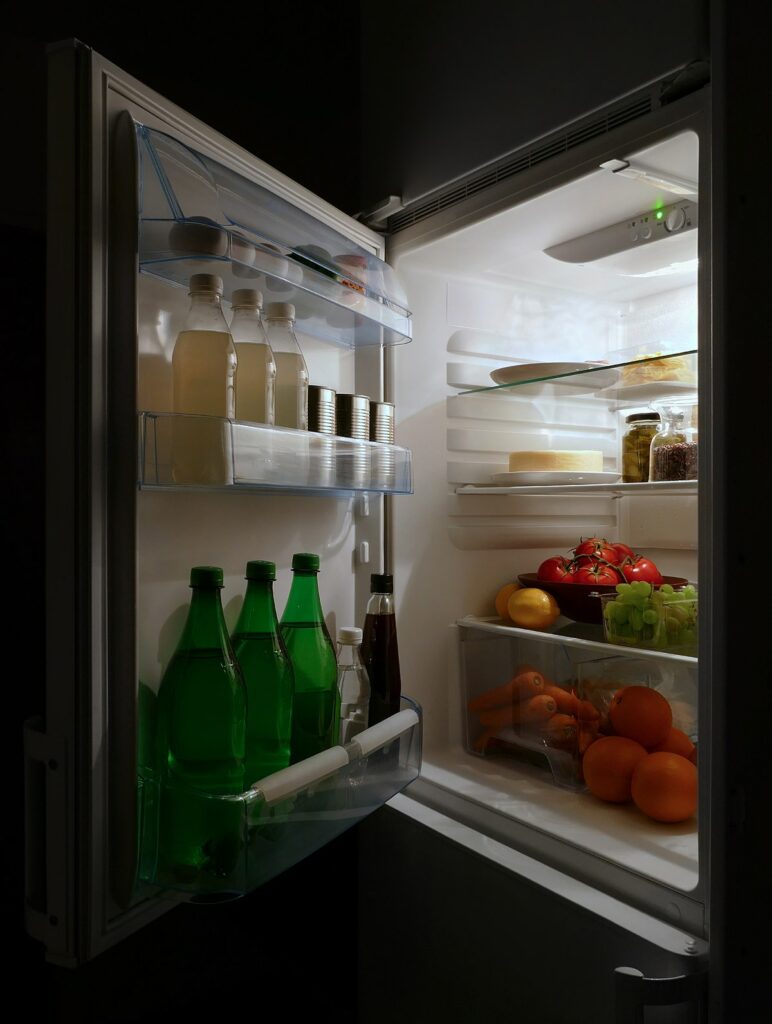R134a is a refrigerant that is used in cars’ air conditioning units, especially in the compressor. It is one of the most important parts that keeps the temperature and pressure at the right amounts.
All R134a refrigerants are the same if they are made according to strict rules, but they are different based on what kind of compressors they are made for. Because of this, a lot of people seem to think that car refrigerant is a good choice for a fridge.
Table of Contents
Can I Use Automotive R134a in a Refrigerator?

The simple answer to the above question is no. It is not recommended that you use automotive refrigerant in the compressor of a refrigerator.
While many technicians swear by the efficacy of either, the different pressure and temperature requirements between a vehicle’s AC and a refrigerator’s compressor are not the same.
The precise constitution of refrigerant manufactured for use in a refrigerator is fabricated for much lower pressure and temperature levels than those that would be found in a car.
That said, it would at best be wasteful and at worst create problems in the future should you substitute one for the other because misuse of refrigerant is rarely reversible and may completely wreck the compressor of your refrigerator.
What is refrigerant?
A refrigerant can be defined as a working fluid used in air conditioning and creates a cooling cycle that maintains a working temperature within the core mechanisms of most machines that would otherwise simply cease to function as a result of heat and temperature interrupting or destroying the compressors and therefore the entire core.
Working fluid just means that it is either a gas or a liquid that can move thermal energy, mechanical energy, kinetic energy, or power from one place to another so that the energy can be used in a different state or point.
By changing back and forth between a liquid and a gas through convection or conduction, a working liquid constantly takes energy, like heat, from one area or location and sends it to another area or component when it changes back into a gas.This is how refrigerants work. They allow heat to move, spread out, or be moved from one part to another, or to spread out and be thrown away.
Since pressure depends on the amount of heat, the heat that is lost or transferred makes the pressure go down, so a destructive pressure level can’t be achieved.The cycle keeps going, and if something gets in the way, the pressure in the compressor builds up until it’s strong enough to hurt the compressor. Even though R134a is a very effective refrigerant, it may not matter since plans are already in the works to phase it out and eventually ban it because of environmental concerns.
History of refrigerant use
The first coolant used in companies to make refrigerators and other cooling devices was ammonia gas. Gases that worked well in the past included methyl chloride, sulfur dioxide, and propane.
Even though these gases were very effective, they were also very volatile, highly flammable, and harmful to people. Thomas Midgley Jr. made the first safe refrigerant gas, Freon R-12, in 1928. Because of safety concerns, these were taken out of use. Freon R-12 is a CFC, which stands for chlorofluorocarbon. As time went on, more and more refrigerants hit the market. The best things about them were that they were steady, safe, and didn’t catch fire.
People in the business thought that harmful gases like ammonia were also bad for the earth. This lead to the use of synthetic refrigerants like CFCs and a lot of innovation around them. Also, there were a lot of hydrochlorofluorocarbons (HCFCs) and hydrofluorocarbons (HFCs) on the market.
Environmental concerns surrounding the use of synthetic refrigerants

Late 1980s scientific research provided findings that placed CFC refrigerants in the list of culprits contributing significantly to pollution and ozone layer depletion.
CFCs and HCFCs, despite their efficacy, had to be phased out and eventually, most of them were banned in accordance with the regulations of the 1989 Montreal Protocol. This ban did not affect HFCs allowing them to rule the market.
R134a refrigerant
R134a is one of these HFC refrigerants. Even though HFCs have a low ability to deplete the ozone layer, they still add to global warming and make the air and natural resources dirty. It is widely used to make refrigerants for cars and home appliances like freezers. At best, it’s a delicate balance between how it affects the environment and the urgent need for a safe and effective refrigerant in the industrial area.
The real question is whether there is an alternative that works just as well and is safer for the world, if not completely safe. In this way, research and development keep going, and new and better refrigerants keep coming onto the market.
One of these alternatives is R-1234yf, which contributes much less to global warming than R134a but works just as well or better as a refrigerant. Since then, the EPA has given the green light for R134a to be made in the U.S., but environmental groups aren’t happy with this choice and are still pushing for R134a to be phased out in favor of R-1234yf or even newer options that can fully replace R134a.
The European Union began a steady phasing out of any refrigerants with a GWP of more than 150 and R134a, therefore, faces the ax.
To put this into perspective, Global Warming Potential (GWP) can be indicated in simple integers.
- GWP of R134a is 1430
- GWP of R1234yf is less than 1
Even without a ban in the US, many manufacturers prefer to utilize the less environmentally offensive option.
Finally
Even ammonia gas, which is now officially safe for the environment, is going through a lot of study to fix the fact that its more dangerous properties were wrongly thought to be environmental hazards. Ammonia gas is the safest choice for the environment, and if it can be made to be safe for general industrial and physical use, it won’t harm the environment at all when used as a refrigerant.
It comes from nature and doesn’t have to be thrown away in a special way, unlike manmade refrigerants, which still have to be thrown away according to very specific rules.


